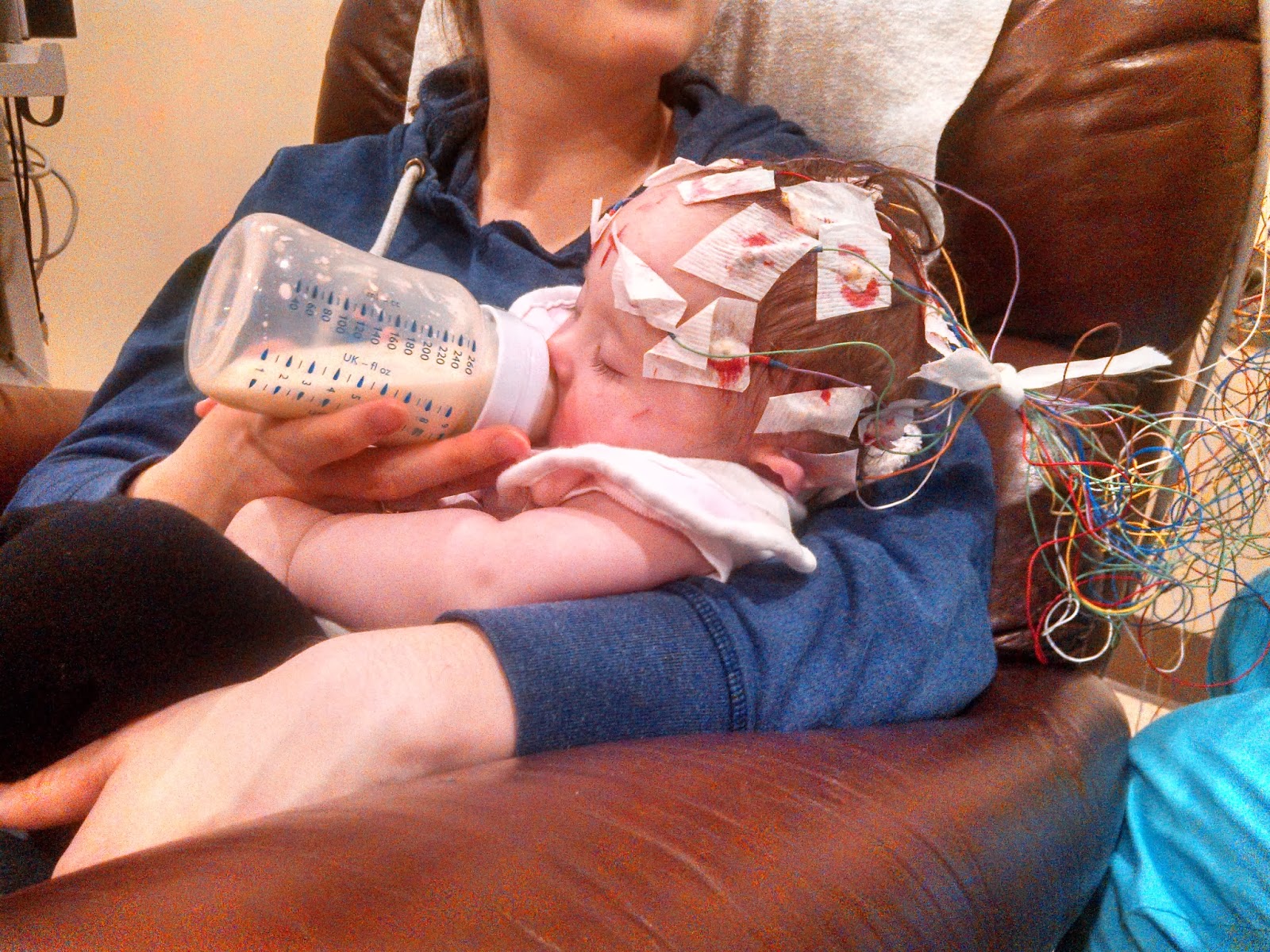Infantile Spasm Scare
A few months ago, I noticed that Rosalie was having some rhythmic, spastic episodes. I got nervous about it because we had just learned about infantile spasms a couple weeks earlier at the Maine Down Syndrome Network's Annual Conference.
Infantile spasms are a serious condition that can affect 1%-5% of children with Down syndrome. Luckily, something about that extra 21st chromosome makes it so that kiddos with Down syndrome typically have milder cases of infantile spasms and they tend to respond better to treatment than typical children do. Having infantile spasms increases the risk of epilepsy later in life. If left untreated, it can result in uncontrolled seizures, decreased IQ, and even death.
I was able to take a video of her on my phone during one of her episodes.
The next morning, I called Rosalie's AMAZING geneticist, Dr. Rosemarie Smith, and her office asked me to e-mail them the video. A few minutes later, I got a call from Dr. Smith saying that she didn't think it was infantile spasms, but that she wasn't 100% certain, so she e-mailed the video to Dr. Peter Morrison, a pediatric neurologist. Less than 5 minutes later, Dr. Morrison himself called me! He echoed Dr. Smith's suspicion that it was not infantile spasms, but asked us to come in that day for an electroencephalogram (EEG), just to be certain. EEGs are tests that use the electrical activity of the brain to track brain waves. The office let me know that the test would work best if Rosalie was very drowsy or sleeping, so I made sure that she skipped a nap before the appointment.
I was so impressed with how promptly my concerns were responded to and the smooth communication between the different offices! We are very lucky to have these wonderful providers in Maine.
That afternoon, I brought a sleepy Rosalie into Dr. Morrison's office. While we were in the waiting room, we got quite a surprise: Caleb showed up! The doctor he was working with gave him part of the afternoon off to come to Rosalie's EEG. I was so happy to have him there!
The first thing the EEG technician did was measure Rosalie's head and mark where she was going to put the electrodes. The picture below shows Rosalie in the process of getting marked up.
Below is a picture of Rosalie with the electrodes all hooked up. Thanks to skipping a nap and a delicious bottle of milk, she was very sleepy at this point.
The tech wrapped gauze around her head to keep the electrodes in place during the EEG.
After Rosalie was all hooked up, the technician dimmed the lights and I held my baby girl while she slept. The test lasted about 45 minutes or so. Caleb and I watched as Rosalie's little brain waves moved across the screen. Every now and then, the technician would mark a certain time in the EEG and type something on the computer. It was usually after Rosalie had moved or made a noise. I'm sure her small movements affected her brain waves, so she was probably just taking accurate notes to help the neurologist read the test. Below is a sample of what the screen looks like during the EEG. This is not from Rosalie's EEG, it's just something I found online.

After the test was over, the technician cleaned up baby girl and we were on our way. Before we even had the chance to leave the parking lot, Dr. Morrison called Caleb with the results. Rosalie's EEG was NORMAL! :) We were so very relieved that she wasn't having infantile spasms.






Comments
Post a Comment